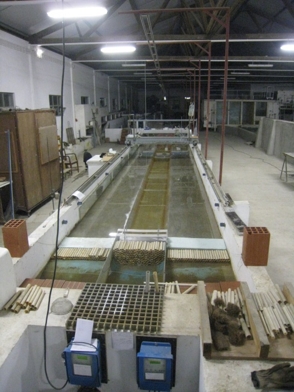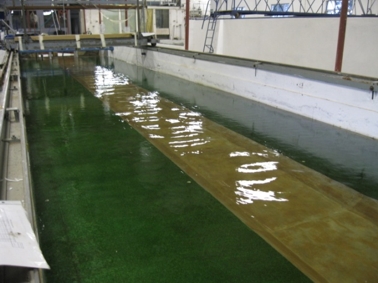Compound channel flume
|
Compound channel flume This channel was originally built in the 1960’s with the purpose of performing studies with free surface flows, with or without mobile bed. Presently, this facility is being used for compound channel flows studies. The flume is a 10 m long and 2 m wide recirculating compound channel. It is made of polished concrete with a bottom longitudinal slope of 0.0011m/m. Separated inlets for the main channel and for the floodplains are installed. For each inlet, the flow discharge is controlled with a valve and monitored through an electromagnetic flow meter with the accuracy of ±0.3 l/s. At the downstream end of the flume, independent tailgates for each sub-channel are used to adjust the water levels in the flume. To perform compound channel experiments, several configurations are possible: i) original smooth channel bed; ii) synthetic grass channel bed; iii) vegetation elements with or without foliage in the interface and iv) obstacles placed in the floodplains.
|






